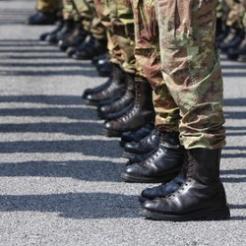The armed forces charity sector is in decline, according to a report released yesterday by the Directory of Social Change (DSC).
Armed forces charities currently make up 1.1 per cent of all registered charities in England and Wales and receive 1.3 per cent of all charitable income.
But the number of charities serving armed forces personnel has declined by 7 per cent over the last five years, according to the report, Sector insight: UK Armed Forces Charities.
Dr Catherine Walker, DSC’s head of sector trends, evidence, analysis and metrics (Steam), told Civil Society News: “There are a lot of myths around the armed forces charity sector. Lots of people are saying there are too many armed forces charities and they are sitting on too much money.
“We wanted to look at what the facts of the matter were. Basically what we found was that in our opinion, there aren’t too many of them as they only make up 1.1 per cent of the sector and they only garner 1.3 per cent of the overall income.”
The total annual revenue for armed forces charities stands at £807m, in comparison to £6.4bn for the healthcare charity sector.
“It’s not our job to say that armed forces charities should be getting billions more in revenue, although I’m sure a lot of them would say that,” said Walker. “We are highlighting that this is a very small sector that is doing a very difficult, specialised and important job.
“So we are just pointing out the comparison that they are basically doing a hell of a lot with fewer resources than other charity sectors.”
Research highlighted by the report shows that the British public donated more money to armed forces charities during the recession but the figure declined as the economy improved.
“There has been a lot of spotlight on armed forces and armed forces charities over the last decade because of modern conflicts in Iraq and Afghanistan,” said Walker. “Research out a few years ago showed that the public was giving more generously to armed forces charities than to other charities during the recession. That made us want to take a closer look at the sector.”
Increasing demand
According to the report, the UK's recent withdrawal from conflict zones means the need for services provided by armed forces charities is set to increase alongside funding declines.
“The withdrawal from Afghanistan is going to mean increased needs in some senses, because the nature of modern warfare is that there are a lot of injuries and disablements from improvised explosive devices, leading to lots of amputees,” said Walker. “So there has been an increased need for that kind of specialised support. For many personnel returning from the theatre of war, it can take a few years for them to decide that they need help. So we know that these needs are going to increase.
“But at the same time with the withdrawal from Afghanistan, armed forces charities are going to fall out of the public perception. So there’s a risk that their income will fall, which it already is doing, while need is increasing.”
According to Walker, the “highly coordinated” armed forces charity sector – made up of just over 2,200 charities - is still largely an “unexplored area of the charity world”.
“A lot of the new report is about myth-busting,” said Walker. “There has also been a perception that new entrants, like Help for Heroes which was founded in 2007, have come in and taken all the money and that all the attention is focused on them. Whereas the actual fact is that Help for Heroes in particular, has become a real asset for the sector because they have managed to increase income for the entire armed forces charitable sector. And because Help for Heroes has raised the profile of the sector, again they have had a positive overall effect.”
DSC released the report today together with a website providing a searchable database of the sector.
Debra Allcock Tyler, chief executive of DSC, said: “We’re shining a light on armed forces charities and the critical role they play by providing much-needed evidence to donors, politicians and other decision-makers. Our aim is that better information will lead to better policy and decision-making.”









